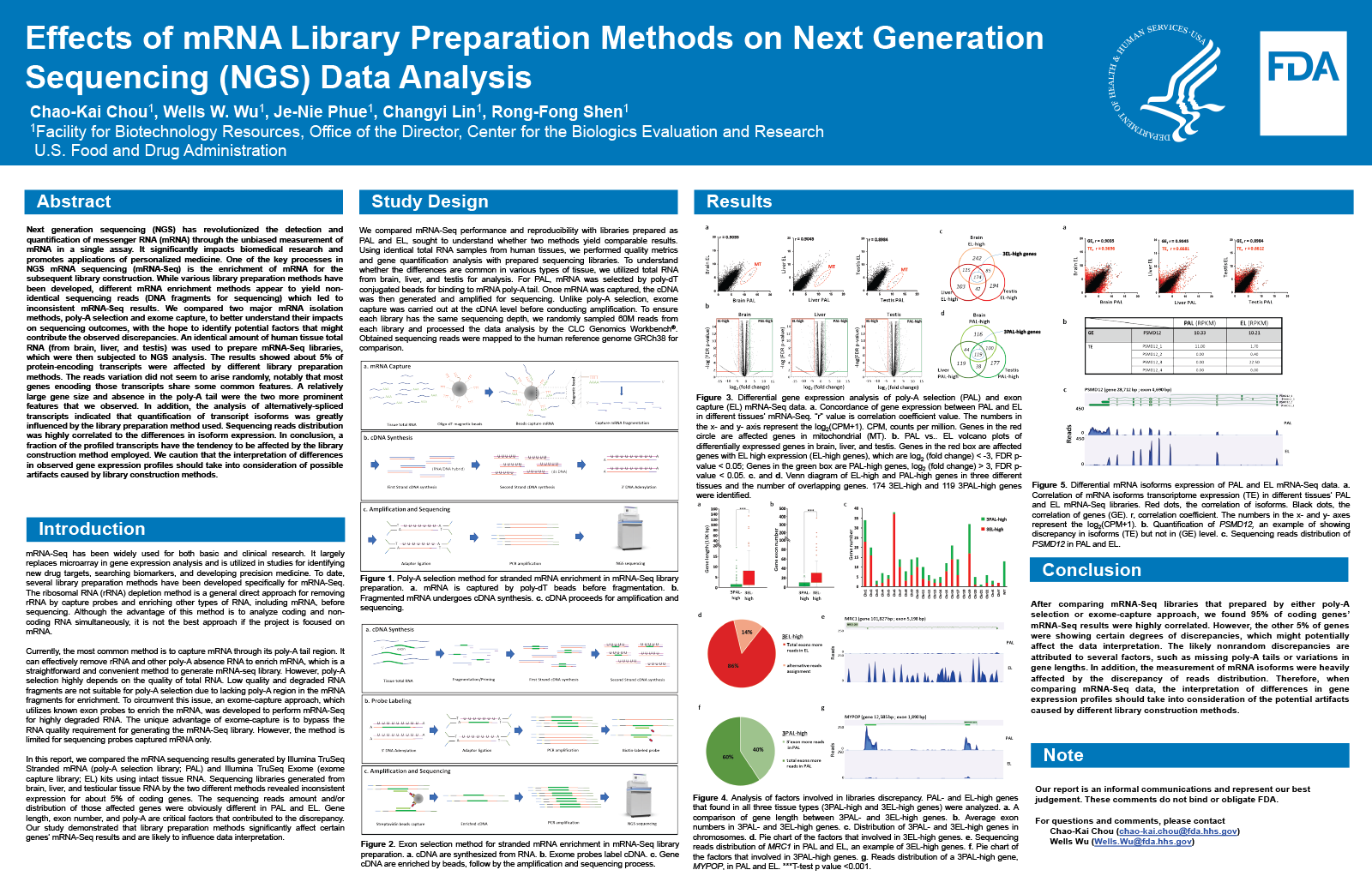2021 FDA Science Forum
Effects of mRNA Library Preparing Methods on NGS (Next Generation Sequencing) Data Analysis
- Authors:
- Center:
-
Contributing OfficeCenter for Biologics Evaluation and Research
Abstract
Next generation sequencing (NGS) has revolutionized the detection and quantification of messenger RNA (mRNA), as it not only enables unbiased measurement of mRNA in a single assay but also uncovers novel transcripts not previously identified. It significantly impacts biomedical research and promotes applications of personalized medicine. One of the key processes for NGS mRNA sequencing (mRNA-Seq) is the enrichment of mRNA for the subsequent library construction. While various library preparation methods have been developed, different mRNA selection methods appear to yield non-identical sequencing reads (nucleic acid fragments for sequencing) which lead to inconsistent mRNA-Seq results. We compare two major mRNA isolation methods, poly-A selection and exome capture, to better understand their impacts on sequencing outcomes, with the hope to identify potential factors contributing to observed discrepancies. An identical amount of human tissue total RNA (from brain, liver, or testis) was used to prepare mRNA-Seq libraries using two major approaches, poly-A selection or exon capture. Prepared libraries were then subjected to NGS analysis and the gene expression profiles analyzed by the CLC Genomics Workbench. About 5% of protein-encoding transcripts were affected due to different library preparation approaches. The affected genes did not seem to occur randomly, notably most share some common features. Gene length and absence in the poly-A tail were the two major factors contributing to the discrepancy in expression profiles. In addition, the analysis of alternatively-spliced transcripts indicated that transcript isoforms were greatly influenced by library preparation methods. Sequencing reads distribution was highly correlated to the differences of isoform expression. In conclusion, a portion of gene expression profile has the tendency to be affected by the library preparation method employed. We caution that the interpretation of differences in gene expression profiles should take into consideration of the potential artifacts caused by different library construction methods.

